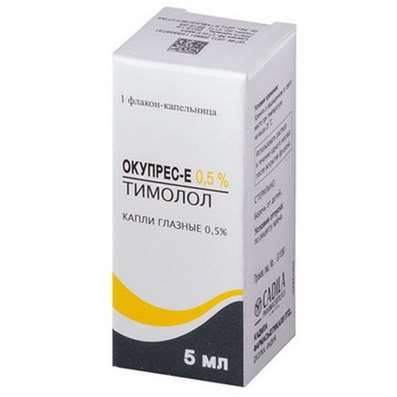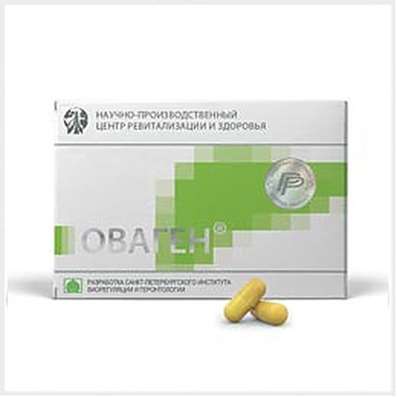Instruction for use: Blogir-3
I want this, give me price
Dosage form: Syrup; Dissolution tablets
Active substance: Desloratadinum
ATX
R06AX27 Desloratadine
Pharmacological groups:
Antiallergic agent - H1-histamine receptor blocker [H1-antihistamines]
The nosological classification (ICD-10)
H04.9 Illness of lacrimal apparatus, unspecified: Insufficient production of tear fluid; Insufficient lacrimation; Red eye syndrome; Lachrymation; Dryness of the anterior surface of the eye
H57.8 Other unspecified diseases of eye and adnexa: Intraocular hemorrhage; Inflammation of the eye; Secondary hyperemia of the eye; Burning sensation in the eyes; Protection of the anterior surface of the eye; Itching in the eyes; Xerosis; Sensation of itching and burning eyes; Dry eye syndrome; Dry eyes; Xerophthalmia
J00 Acute nasopharyngitis [rhinitis]: Viral rhinitis;Inflammation of the nasopharynx; Inflammatory Nose Disease; Purulent rhinitis; Nasal congestion; Nasal congestion due to cold and flu; Difficulty with nasal breathing; Difficulty with nasal breathing for colds; Difficult nasal breathing; Difficult nasal breathing for colds; Nasal hypersecretion; Coryza; ARI with phenomena of rhinitis; Acute rhinitis; Acute rhinitis of various origins; Acute rhinitis with thick purulent-mucous exudate; Acute rhinopharyngitis; Edema of the mucous membrane of the nasopharynx; Rhinitis; Rhinorrhea; Infectious-inflammatory disease of ENT organs;Severe cold; Rhinopharyngitis
J30 Vasomotor and allergic rhinitis: Allergic rhinopathy; Allergic rhinosinusopathy; Allergic diseases of the upper respiratory tract; Allergic rhinitis; Allergic rhinitis seasonal; Vasomotor runny nose; Prolonged allergic rhinitis; All-year-round allergic rhinitis; All-year allergic rhinitis; Year-round or seasonal allergic rhinitis; All-the-year-round rhinitis of an allergic nature; Rhinitis vasomotor allergic; Exacerbation of pollinosis in the form of rhinoconjunctival syndrome; Acute allergic rhinitis; Edema of the nasal mucosa; Edema of the nasal mucosa; Edema of the mucous membrane of the nasal cavity; Swelling of the nasal mucosa; Swelling of the nasal mucosa; Pollinosis; Permanent allergic rhinitis; Rhinoconjunctivitis; Rhinosinusitis; Rhinosinusopathy; Seasonal allergic rhinitis; Seasonal allergic rhinitis; Hay rhinitis; Chronic allergic rhinitis; Allergic diseases of the respiratory tract
L29 Itching: Itching with partial obstruction of the biliary tract; Dermatitis itchy; Dermatosis with persistent itching; Other itching dermatoses; Itching dermatoses; Itching allergic dermatosis; Itching dermatitis; Itching dermatosis; Itching itch; Excruciating itching; Severe itching; Endogenous itching; Skin itching with dermatosis; Restricted itchy dermatitis; Itching of the skin; Itchy scalp; Itching eczema
L29.8 Other itching: Itching of the eye; Itching of the conjunctiva; Itching of the palate; Itching of the nose; Itching of the nasal mucosa; Itchy syringe; Itchy pruritus
L50 Urticaria: Idiopathic chronic urticarial; Injury Urticaria; Chronic urticarial; Hives of the newborn
R06.7 Sneezing: Sneezing
R21 Rash and other nonspecific skin rashes: Skin rash; Skin and mucous eruptions; Skin rashes; Drug rash; Medicinal rash fixed; Dry skin rashes; Rash; Toxidermy; Toxicoderma; Toxic rash; Korepodobnye rashes from drugs; Macular Papular Eruptions; Drug-induced rash
Composition
Syrup 1 ml
active substance: Desloratadine 0.5 mg
Auxiliary substances: propylene glycol 150 mg; Sorbitol - 150 mg; Hypromellose - 3.5 mg; Sucralose - 2 mg; Sodium citrate - 1.26 mg; Tutti-frutti flavoring (fragrances, propylene glycol (E1520) 0.75 mg, citric acid 0.5 mg, water q.s.
Description of dosage form
A clear, colorless solution.
Pharmachologic effect
Mode action - H1-antihistamine.
Pharmacodynamics
Non-active antihistamine long-acting drug. It is the primary active metabolite of loratadine. Selectively blocks the activity of peripheral H1-histamine receptors. Suppresses the release of histamine from mast cells.
Inhibits a cascade of reactions of allergic inflammation, incl. Release of anti-inflammatory cytokines, including IL-4, IL-6, IL-8, IL-13, isolation of adhesion molecules such as P-selectin. Thus, it prevents development and facilitates the course of allergic reactions, has antipruritic and antiexudative action, reduces permeability of capillaries, prevents the development of edema of tissues, spasm of smooth muscles.
The drug has no effect on the central nervous system, has almost no sedative effect (does not cause drowsiness) and does not affect the rate of psychomotor reactions. Does not cause an extension of the QT interval on the ECG.
Pharmacokinetics
After ingestion desloratadine is well absorbed into the digestive tract, it is detected in the blood plasma 30 minutes after ingestion. Cmax is reached after about 3 hours.
Distribution. The binding of desloratadine to plasma proteins is 83-87%. When used in adults and adolescents for 14 days at a dose of 5 to 20 mg once a day, signs of clinically significant cumulation of desloratadine have not been identified. Simultaneous intake of food or grapefruit juice does not affect the distribution of desloratadine (when taken at a dose of 7.5 mg 1 time per day). Does not penetrate the BBB.
Metabolism. Exposed to intensive metabolism in the liver by hydroxylation to form 3-OH-desloratadine, combined with glucuronide. It is not an inhibitor of CYP3A4 and CYP2D6 isoenzymes and is a substrate or inhibitor of P-glycoprotein.
Excretion. Desloratadine is excreted from the body in the form of a glucuronide compound and in small amounts (less than 2%) by the kidneys and through the intestine (less than 7%) unchanged. T1 / 2 averages 27 hours.
Indication of the drug Blogir-3
Allergic rhinitis (elimination or relief of sneezing, nasal congestion, discharge of mucus from the nose, itching in the nose, itching of the palate, itching and redness of the eyes, lachrymation);
Urticaria (reduction or elimination of itching, rash).
Contraindications
Hypersensitivity to the components of the drug;
Hereditary violations of the tolerance of fructose (due to the presence of sorbitol in the formulation);
pregnancy;
lactation;
Age up to 1 year.
With caution: severe renal failure.
Application in pregnancy and breastfeeding
The use of the drug Blogir-3®, syrup, is contraindicated in pregnancy due to the lack of clinical data on the safety of its use in this period.
Desloratadine is excreted in breast milk, so the use of the drug during breastfeeding is contraindicated.
Side effects
In clinical trials in children under 2 years of age, the following adverse events were observed with the drug, the frequency of which was slightly higher than with placebo: diarrhea, fever, insomnia; In children aged 2 to 11 years, the incidence of side effects was the same as with placebo; In adults and adolescents aged 12 years, the following undesirable effects were observed with the use of the drug, the frequency of which was slightly higher than with placebo: fatigue, dry mouth, headache.
Very rarely, the following side effects /
From the side of the central nervous system: hallucinations, dizziness, drowsiness, insomnia, psychomotor hyperactivity, convulsions.
From the CVS: tachycardia, palpitations.
On the part of the digestive system: abdominal pain, nausea, vomiting, indigestion, diarrhea.
From the liver and biliary tract: increased activity of hepatic transaminases, increased levels of bilirubin, hepatitis.
From the musculoskeletal system: myalgia.
Allergic reactions: anaphylaxis, angioedema, dyspnoea, pruritus, rash, incl. Urticaria, photosensitivity.
If any of the side effects described in the description are aggravated or any other side effects not indicated in the description are noted, the physician should be informed.
Interaction
With repeated combined use of desloratadine with ketoconazole, erythromycin, azithromycin, fluoxetine and cimetidine, no clinically significant changes in the desloratadine concentration in plasma have been detected. Blogger-3® does not enhance the effect of alcohol on the central nervous system. Eating does not affect the effectiveness of the drug.
Dosing and Administration
Inside, regardless of food intake, squeezed a small amount of water.
Children aged 1 to 5 years: 1.25 mg (2.5 ml syrup) 1 time per day; Children aged 6 to 11 years: 2.5 mg (5 ml syrup) 1 time per day; Adults and adolescents from 12 years: 5 mg (10 ml of syrup) 1 time per day.
In seasonal (intermittent) allergic rhinitis (in the presence of symptoms lasting less than 4 days a week or less than 4 weeks per year), it is necessary to evaluate the course of the disease. With the disappearance of symptoms, taking the drug should be discontinued, with repeated appearance of symptoms, the drug should be resumed. With year-round (persistent) allergic rhinitis (in the presence of symptoms lasting more than 4 days a week or more than 4 weeks per year), the drug should be taken during the entire exposure period of the allergen.
Overdose
In clinical trials, when desloratadine was administered at a dose of up to 45 mg (9 times the therapeutic dose), clinically significant adverse effects were not observed.
Treatment: in case of an overdose, standard measures are taken to remove the active substance from the digestive tract. Symptomatic and supportive therapy is recommended.
Desloratadine is not excreted in hemodialysis, the effectiveness of peritoneal dialysis is not established.
Special instructions
Use in pediatrics. The effectiveness and safety of the use of the drug Blogs-3®, syrup, in children under the age of 1 year is not established.
In most cases, rhinitis in children under 2 years of age is infectious. Studies of the effectiveness of desloratadine in rhinitis of infectious etiology were not conducted.
Differential diagnosis between allergic rhinitis and rhinitis of a different origin in children under 2 years of age presents certain difficulties. When conducting a differential diagnosis, attention should be paid to the presence or absence of foci of infection or structural anomalies of the upper respiratory tract, to conduct a careful history, examination, as well as appropriate laboratory tests and skin tests.
Impact on the ability to manage vehicles and mechanisms. Does not affect the recommended dose. However, in very rare cases, some patients may experience drowsiness with desloratadine, which may affect their ability to drive vehicles or work with machinery.
Release form
Syrup, 0.5 mg / ml. For 60 or 120 ml of syrup in a vial of dark glass, sealed with a plastic screw cap of white color with protection from opening by children. 1 fl. In a set with a dosage spoon, graduated to 2.5 and 5 ml, placed in a cardboard box.
Manufacturer
Ready-made dosage form / primary packaging: Jenafarm SA, 18th km Maratonos Avenue, Pallini Attica, 15351, Greece.
Secondary packaging / releasing quality control: Beluga, medicines and cosmetics d.d., Republic of Croatia, 48000, Koprivnica, st. Danica, 5.
The owner of the registration certificate: Beluga, medicines and cosmetics d.d., the Republic of Croatia.
Conditions of leave from pharmacies
Without recipe.
Storage conditions of the drug Blogir-3
At a temperature not higher than 25 ° C.
Keep out of the reach of children.
Shelf life of the drug Blogir-3
3 years.
Do not use after the expiry date printed on the package.

 Cart
Cart





